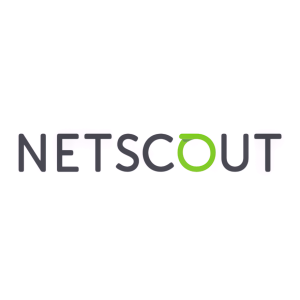Cybercriminal Attacks Accelerate Global Cybersecurity Crisis According to 1H2021 NETSCOUT Threat Intelligence Report
Approximately 5.4 million DDoS attacks represent an
In the wake of
During 1H2021, cybercriminals weaponized and exploited seven newer reflection/amplification DDoS attack vectors putting organizations at greater risk. This attack vector explosion spurred an increase in multivector DDoS attacks with a record-setting 31 attack vectors deployed in a single attack against one organization.
Other key findings from the NETSCOUT 1H2021 Threat Intelligence Report include:
- New adaptive DDoS attack techniques evade traditional defenses. By customizing their strategies, cybercriminals evolved their attack efforts to bypass cloud-based and on-premise static DDoS defenses to target commercial banks and credit card processors.
- Connectivity supply chain increasingly under attack. Bad actors looking to cause the most collateral damage focused their efforts on vital internet components, including DNS servers, virtual private network (VPN) concentrators, services, and internet exchanges, disrupting essential gateways.
- Cybercriminals add DDoS to their toolkit to launch triple extortion campaigns. Ransomware has become big business, with extortionists adding DDoS to their attack regimen to ratchet up the pressure on victims and add stress to security teams. Triple extortion combines file encryption, data theft, and DDoS attacks, increasing the possibility that cyber criminals receive payment.
-
The fastest DDoS attack recorded a
16.17% year-over-year increase. A Brazilian wireline broadband internet user launched the attack, which was likely related to online gaming. Using DNS reflection/amplification, TCP ACK flood, TCP RST flood, and TCP SYN/ACK reflection/amplification vectors, the sophisticated attack recorded 675 Mpps. -
The largest DDoS attack, 1.5 Tbps, represented a year-over-year increase of
169% .ASERT data identified this attack against a German ISP, deploying a DNS reflection/amplification vector. This attack represents a dramatic increase in size over any attacks recorded in 1H2020. - Botnets contribute to major DDoS activity - Tracked botnet clusters and high-density attack-source zones worldwide showcased how malicious adversaries abused these botnets to participate in more than 2.8 million DDoS attacks. In addition, well-known IoT botnets Gafgyt and Mirai continue to pose a severe threat contributing to more than half of the total number of DDoS attacks.
"Cybercriminals are making front-page news launching an unprecedented number of DDoS attacks to take advantage of the pandemic's remote work shift by undermining vital components of the connectivity supply chain," stated
NETSCOUT's Threat Intelligence Report covers the latest trends and activities in the DDoS threat landscape. It covers data secured from NETSCOUT's Active Level Threat Analysis System (ATLAS™) coupled with NETSCOUT's ATLAS Security Engineering & Response Team (ASERT) insights.
The visibility and analysis represented in the Threat Intelligence Report and Omnis® Threat Horizon fuel the ATLAS Intelligence Feed used across NETSCOUT's Omnis security product portfolio to detect and block threat activity for enterprises and service providers worldwide.
For more information on NETSCOUT's semi-annual Threat Intelligence Report, please visit our interactive website. You can also find us on Facebook, LinkedIn, and Twitter for threat updates and the latest trends and insights.
About NETSCOUT
©2021
View source version on businesswire.com: https://www.businesswire.com/news/home/20210921005395/en/
Editorial Contacts:
Manager,
+1 781 362 4330
maribel.lopez@netscout.com
+1 860 326 1698
NETSCOUT-US@FinnPartners.com
Source:







